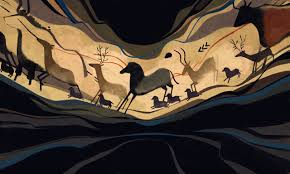The best known examples of early art are the cave paintings found in France, Spain, Indonesia and other parts of the world. These paintings were created by early humans using a variety of natural pigments and materials, including charcoal, ocher, and animal fat. The subject matter of these early cave paintings varies widely, but most often depict scenes of everyday life such as hunting, fishing and gathering food. Some paintings also depict myths and otherworldly beings, suggesting that early humans had a rich imagination and sense of the supernatural.

Humans have also created other art forms, such as sculpture and ornaments. Often made of natural materials such as bone, ivory and wood, these objects were decorated with intricate patterns and designs. Despite the simplicity of these early works of art , is a testament to the ingenuity and creativity of the early humans who created them. They show that even in the most difficult environments, people have always sought ways to express themselves and make sense of the world around them. The importance of early art goes beyond its aesthetic value. These early works of art provide important insights into the lives and cultures of our ancient ancestors. They offer a glimpse into our daily struggles and victories, beliefs and traditions, and our relationship with the natural world.

In summary, early art and the cavemen represent an important chapter in human history.The cave paintings, sculptures, and ornaments created by these early humans represent their creativity, ingenuity, and proof of resilience. They offer glimpses into times and places that are vastly different from our own, helping us to better understand the complex and diverse nature of human experience.
Article by Steve Ayewah
Art Teacher
Canadian Bridge Academy Abuja

